The necessary equipment
To complete this tutorial, you will need:
- 1 whole skin of French sheepskin leather - 0.75 m²
- 2 straps of nourished collar leather - coffee brown - Width 29 mm - Long 120 cm
- 1 strap of nourished collar leather - coffee brown - Width 24 mm - Long 120 cm
- 1 meter of flat cut buffalo leather lace - Width 4 mm - Chocolate
- 1 half-round ring - aged brass steel - 25 x 20 x 3 mm
- 1 oval rotating carabiner - aged brass - 60 x 25 mm
- 2 sliding buckles - aged brass - 30 x 22 mm - 3.8 mm wire
- 2 rectangular loops - aged brass - 30 x 13 mm - 3 mm wire
- 1 rolling eyelet kit and installation tool - 11 m - aged brass
- 1 set of 20 large brass rivets (T6) aged brass finish
- 1 spool of braided and waxed polyester thread - 500 meters - diameter 0.8 mm - brown
- 25 saddle needles - round tip - Lg = 57 mm - d = 1.1 mm - Size 1/0 (Ref: CA118_011)
- 1 pot of 250 ml of neoprene glue, LIQUID with brush integrated into the cap
- 1 meter of tricolor French flag polyester ribbon - width 15 mm
- 1 pot of tokonole - Finishing gum for leather - 120g
And the following equipment:
- 1 Scotch NORTON adhesive masking tape - Lg 19 mm - Long 50 m (WA079)
- 1 round punch cookie cutter - SEIWA Japan - diameter 1.5 mm (TA300_015)
- 1 round cookie cutter with straight handle - diameter 11 mm (EP_DROIT_11)
- 1 rivet setting tool (TL_8100_00)
- 1 anvil for setting rivets and snap fasteners (TL_8056_00)
- 1 hardening fixative for leather finishing - Deco Cuir
1. Cut out the pattern pieces
Download the pattern and print it in full size. Then cut out the pieces, leaving about 1 cm of margin at the edge of the different pieces. Tape (using masking tape so as not to damage the leather) the pattern pieces to the leather skin. 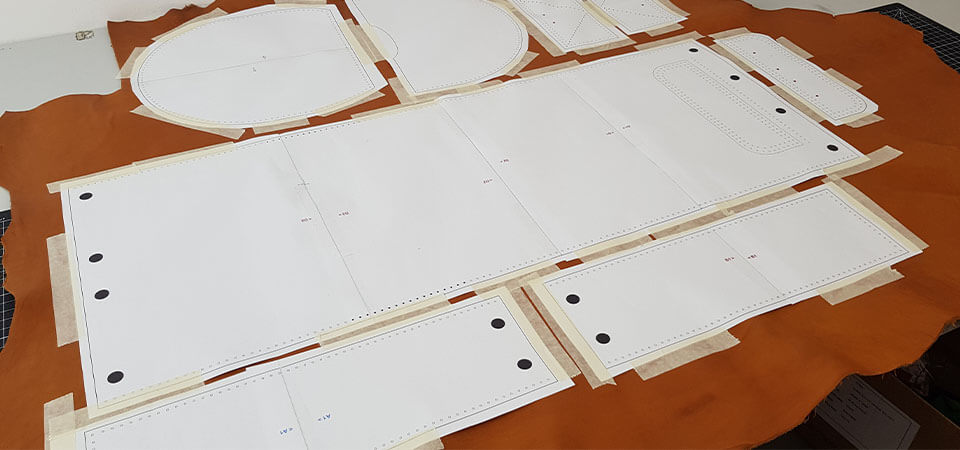
2. Pierce the leather and cut out the pieces
Pierce the sewing holes indicated on the pattern using a round punch cutter 1.5 mm in diameter. Also drill the holes for the rivets (3 mm) and the holes for the eyelets (11 mm). 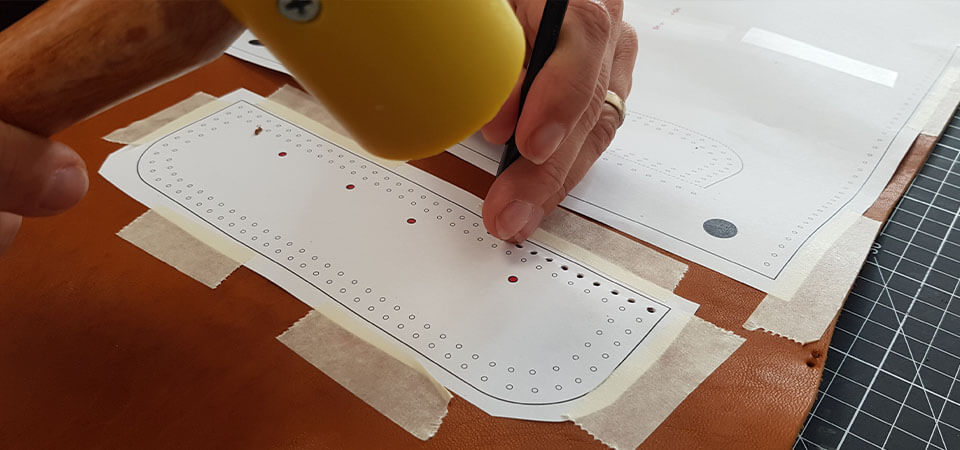
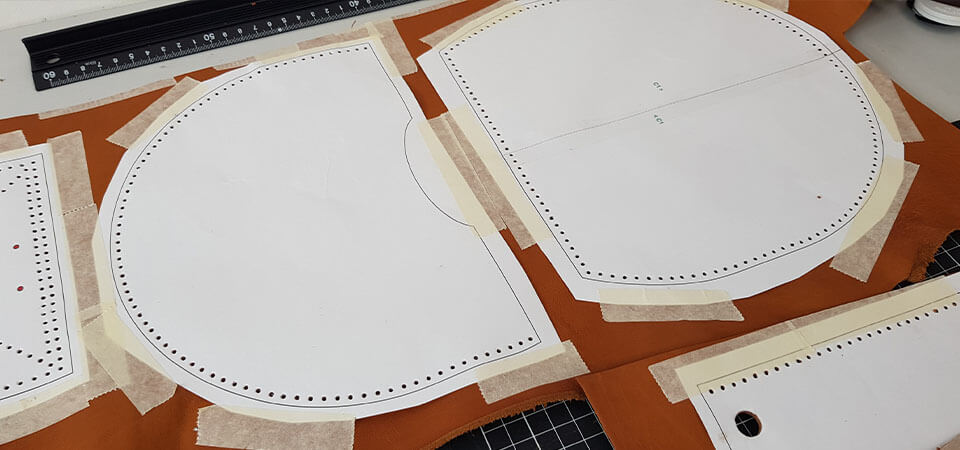
Then, cut out the different pieces, following the lines, with a cutter and/or rotary cutter. 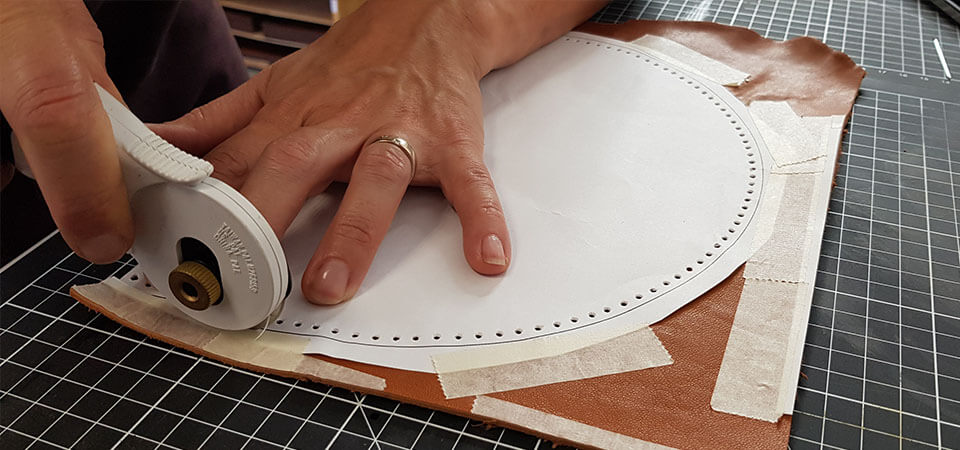
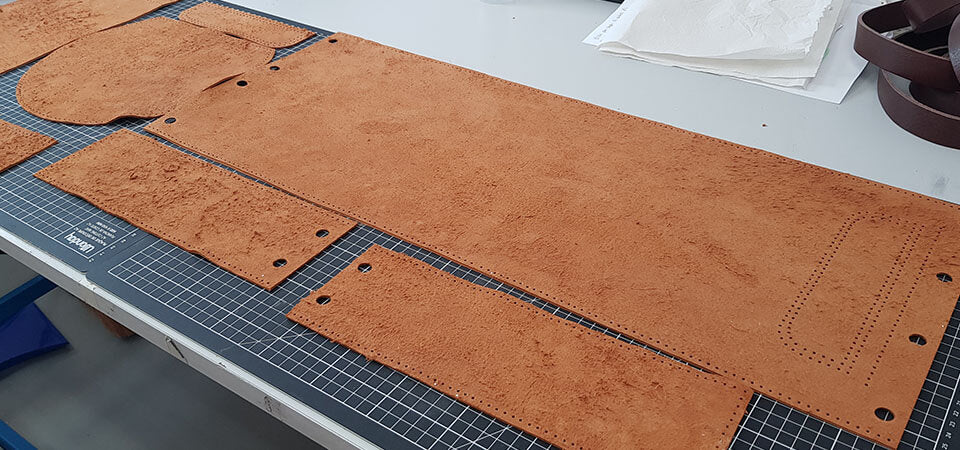
3. Option: apply hardener to the crust side
Using a brush, apply hardening spray to the back (crust) of all leather pieces. Then leave to dry for 24 hours (do not place in the sun). The hardener will help stick the fibers together and make the leather firmer. 
| WITHOUT HARDENER | WITH HARDENER |
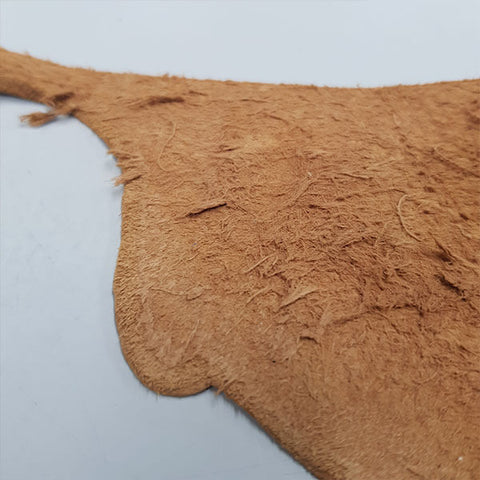 |
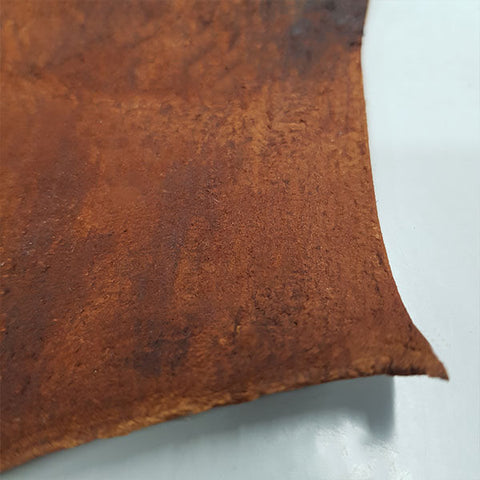 |
4. Prepare the flap
Glue piece no. 5 onto piece no. 7 of the pattern (be careful that the holes are opposite each other). Apply neoprene glue to the crust of the leather then facilitate gluing with a steel roller. 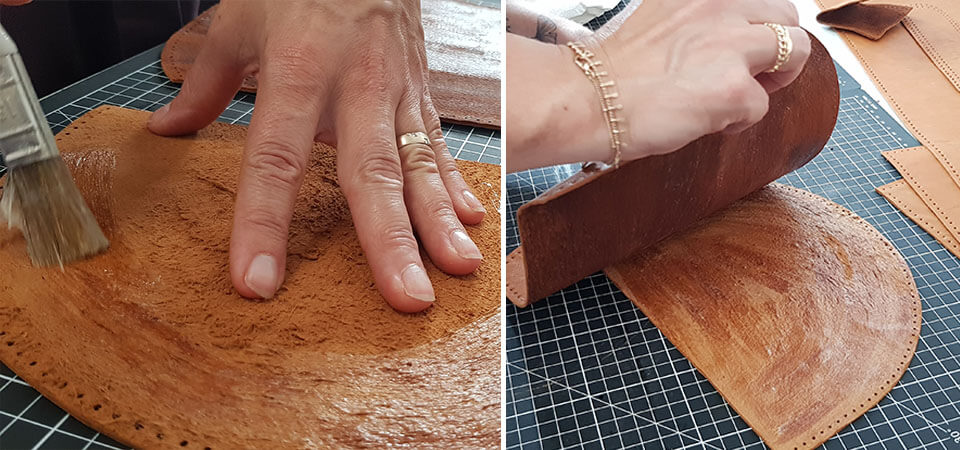
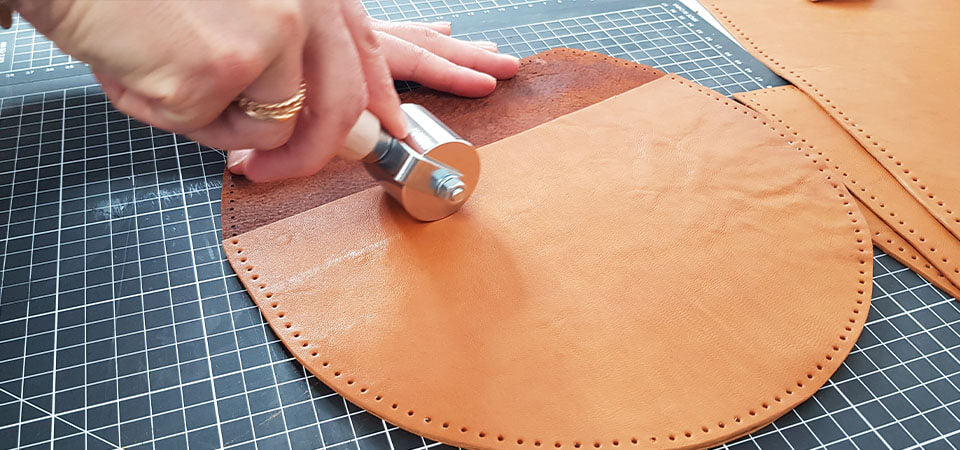
5. Start sewing the flap
Sew the two flap pieces together. For that :
- Cut the thread : generally equivalent to 4 or 5 times the length of the sewing line.
- Thread a needle into each end of the thread (see photo 1):
- Crush the end of the thread and pass it through the eye of the needle.
- Pull the thread to tie the knot.
- Do the same thing to thread the other end of the thread onto the second needle.
- Pass one of the needles through the 4th hole and even out the threads.
For a question of aesthetics, we started sewing at the 4th stitch in order to make 3 double stitches and thus have symmetry in relation to our end seam (the 3 stopping points) => to be done only if the seams are not do not come together. (see photo 2) - Sew by passing each needle through each hole one by one.
- Then tighten the point well.
- To finish the seam: make 3 securing stitches, cut the thread flush then burn it (if polyester).
- Finally, hammer the seams with a splicing hammer.
Be careful not to sew the top line of the flap at this step (see photo 3).
SEE THE GUIDE TO SIMPLIFIED LEATHER SEWING >
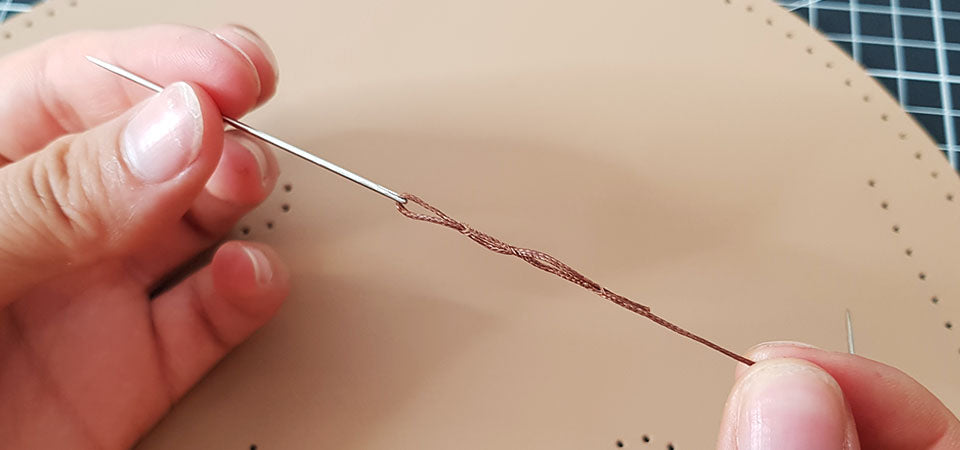


6. Work the edges of the flap
Using a finishing eraser: work the edges of the flap. Start by sanding the slices with an abrasive sponge, then apply tokonole and rub briskly with a smoother or cloth.
For the more experienced, you can choose to work the slices with a rim.
WHAT IS AN EDGE?
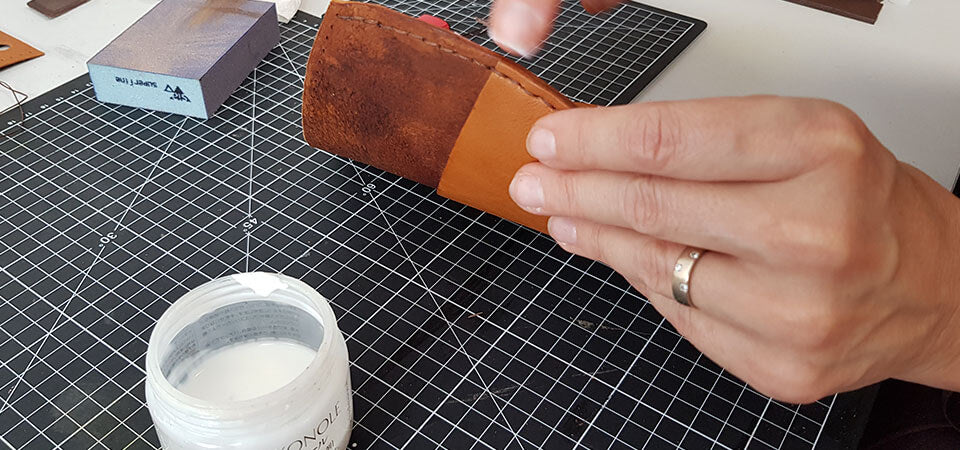 BEFORE AFTER
BEFORE AFTER 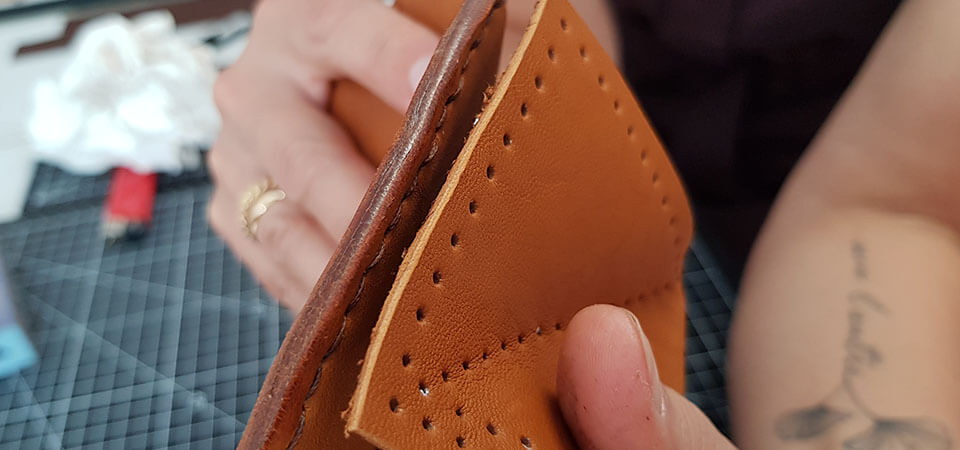
7. Cut the leather strips
Cut the 24mm leather strap into 3 parts:
30 cm for the bag handle
33 cm for the flap strap
43 cm for the bag circumference
Cut the 29mm leather strap into 2 parts:
2 times 100 cm for the bag handles
2 times 11 cm for the bottom of the handles
Then work the edges of each strip.
Square off, sand the edges then apply tokonole and rub briskly with a smoother or a cloth. 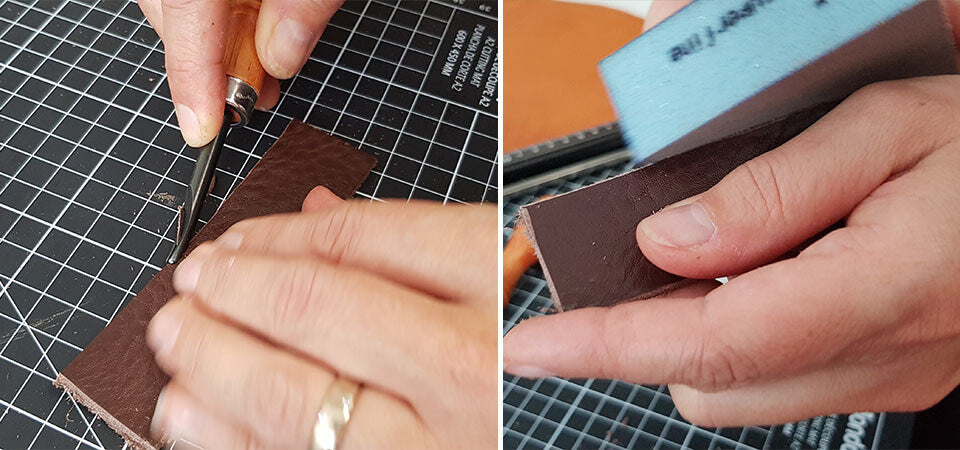
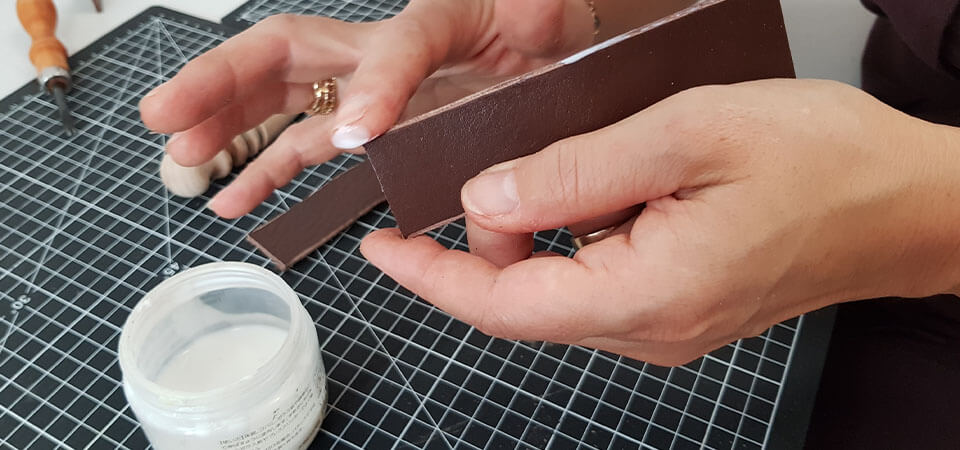

8. Trim the ends of each strip
Trim the ends of each strip by 3/4 cm.
LEARN MORE ABOUT THE PARAGE >

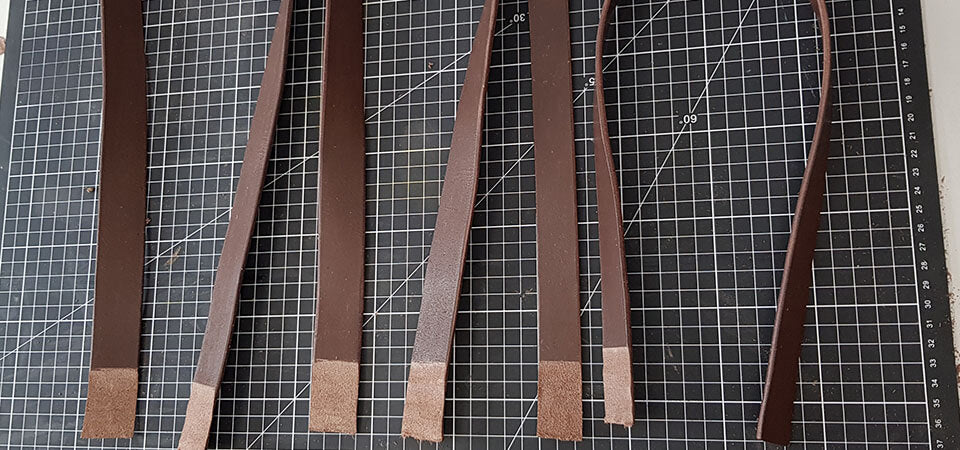
9. Work on the strap hooks
Take the two straps measuring 29 mm wide and 11 cm long.
Pass the rectangular loops through the center of the 11 cm strips and glue the two ends of the strips together. 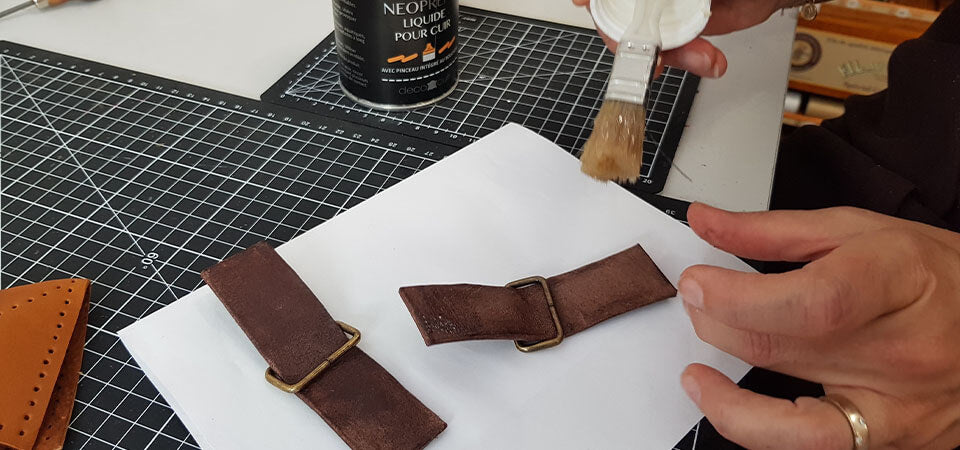
Work the slices with tokonole then fold pieces no. 2 and no. 3 in half. Then, place the 11 cm strips at the level of the hole for the rivet (indicated on the pattern) and let them protrude approximately 2.5 cm from the edge.
Using a round awl, mark the location of the rivet as well as the sewing holes on the 11 cm strips. 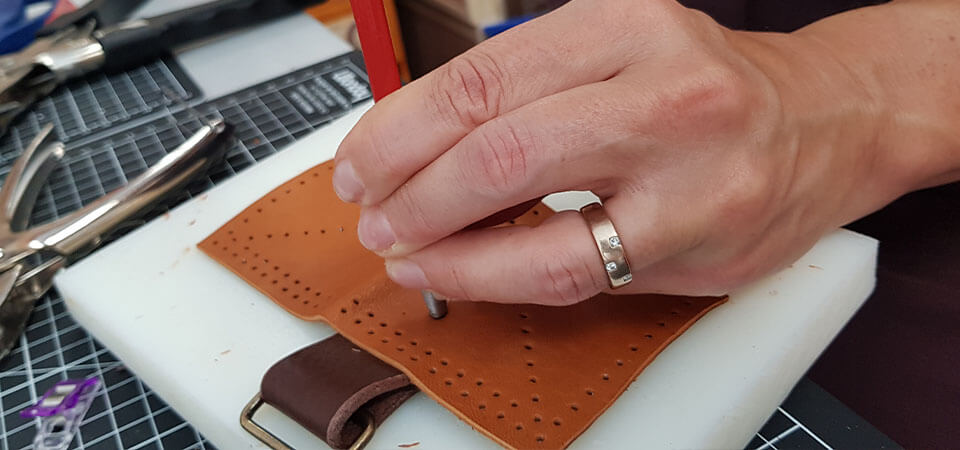
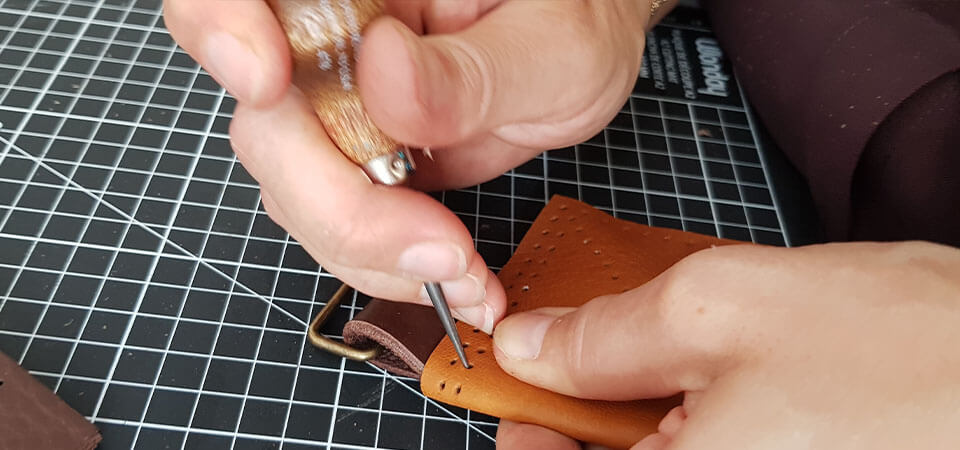
Pierce the strap to place the rivet and facilitate the passage of the needle when sewing. 
Fold parts no. 2 and no. 3 in half and glue them using contact cement.
To finish, sew the two squares. Be careful, you only need to sew the outline of the square. Diagonal stitching will be done during final assembly.
You can use a steel roller to flatten the piece of leather and allow better adhesion of the contact cement. 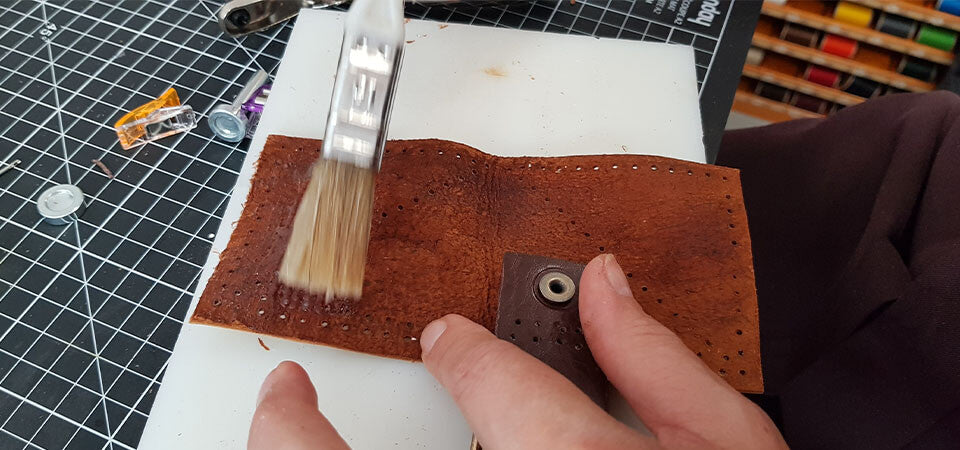
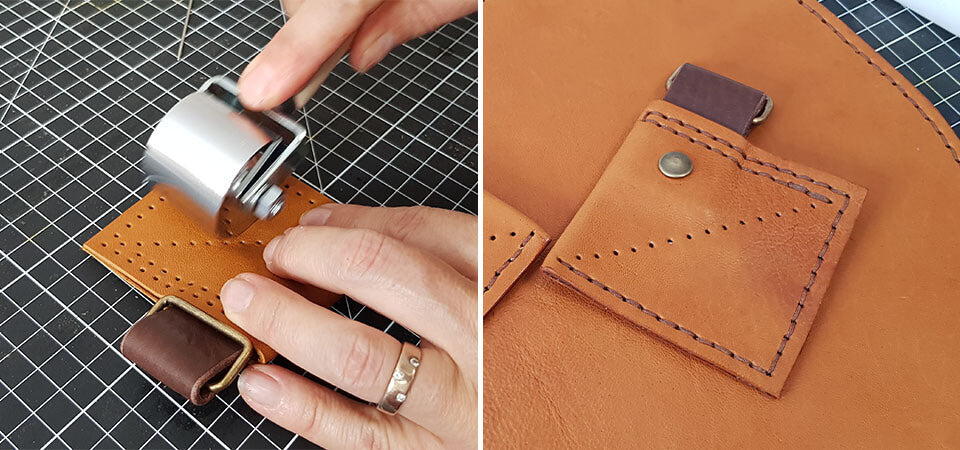
10. Work all the slices of the basane
Finish working all the slices of the sheepskin (with a finishing eraser) before continuing the assembly.
11. Position the straps on the back of the bag
Take the 100 cm, 30 cm and 43 cm strips.
Place the straps on the back of the backpack, in the location provided on the pattern.
Please note, for the 100 cm strips (at each end of piece no. 1): place only 1 end of each strip and place them right sides together.
For the 30 cm strap: place the two ends in the rectangle, also right sides together.
To finish, place one of the ends of the 43 cm strap in the center of the rectangle, the wrong side of the strap against the right side of the sheepskin. 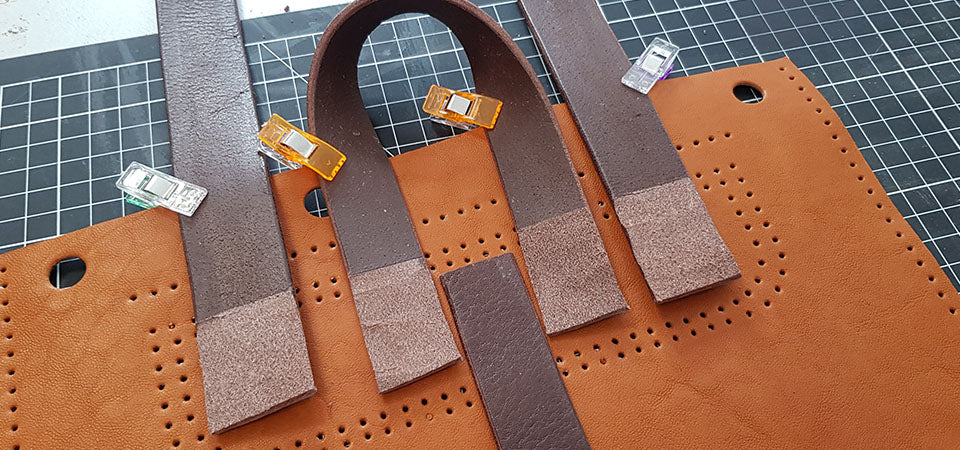
Mark the position of the rivets as well as the sewing holes using a round awl. Then make the holes for the rivets with a 3mm cookie cutter. 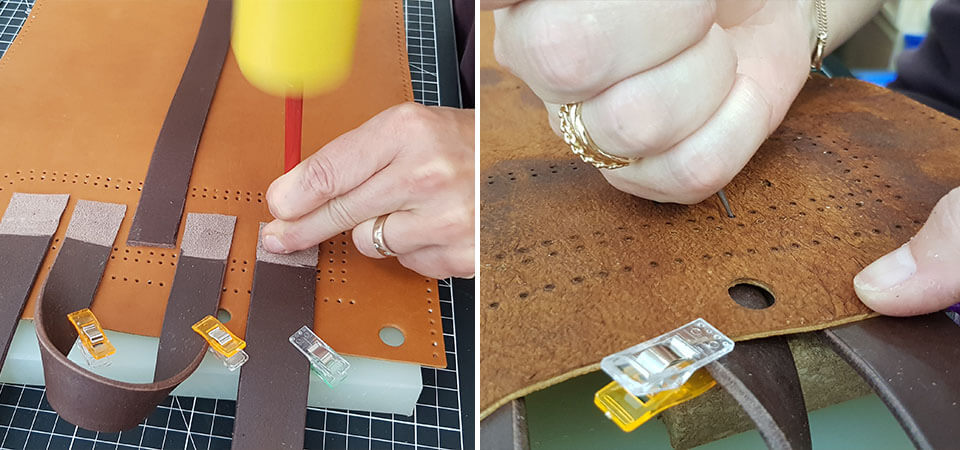
Apply contact glue to stick the rectangle (piece no. 1) to the location provided on the back of the bag (piece no. 9). 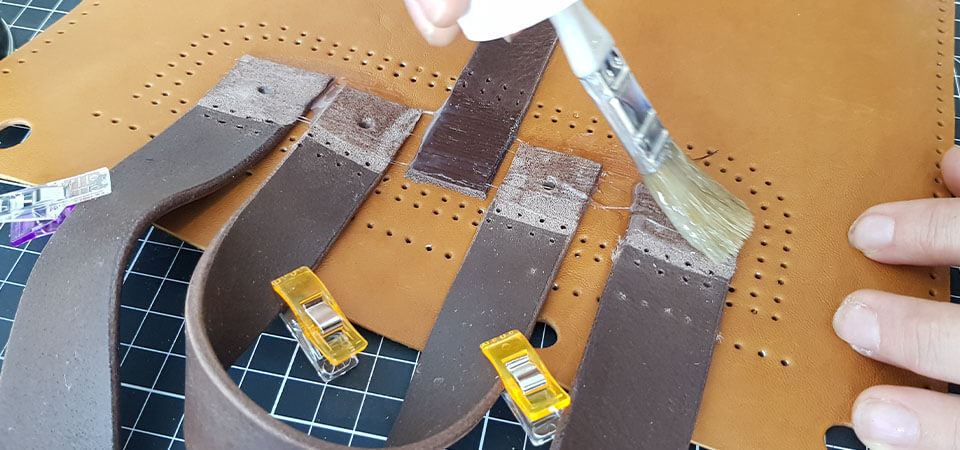
Then sew the rectangle (piece no. 1) and hammer the seam. 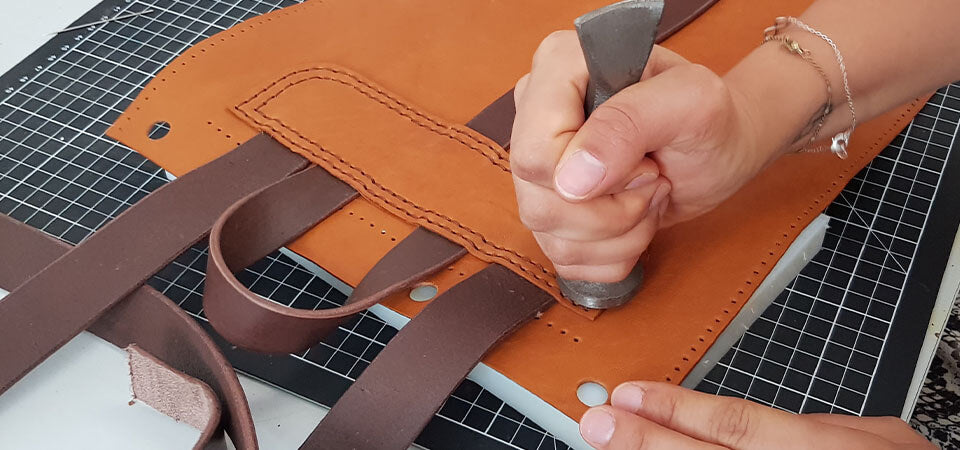
Finally, install the 4 rivets. 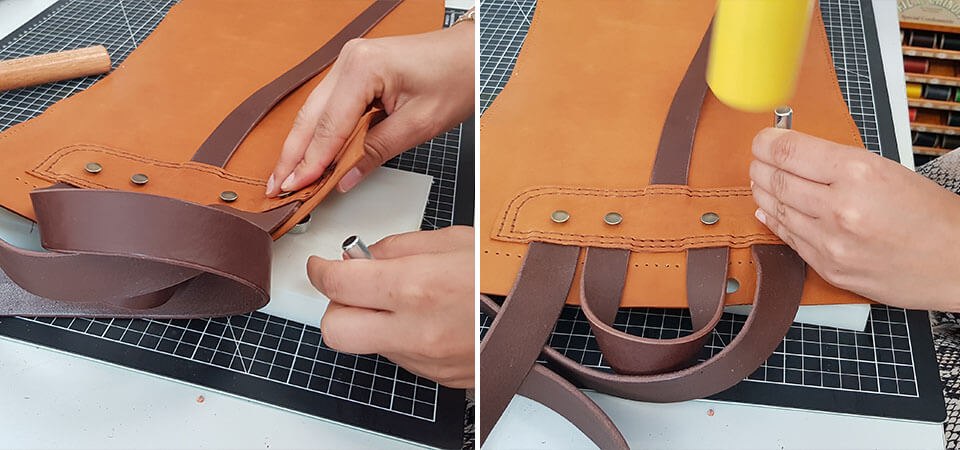
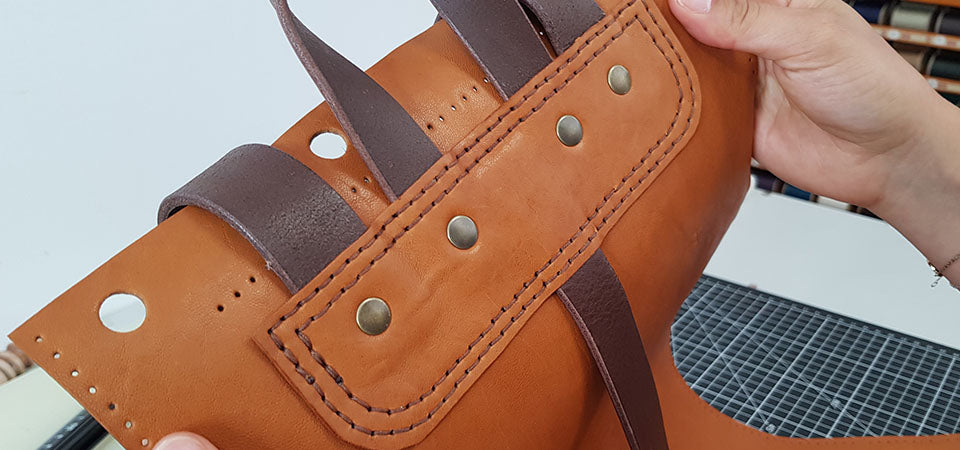
12. INSTALL THE 12 EYELETS
Install the 12 rolling eyelets using the installation tool provided in the eyelet kit. 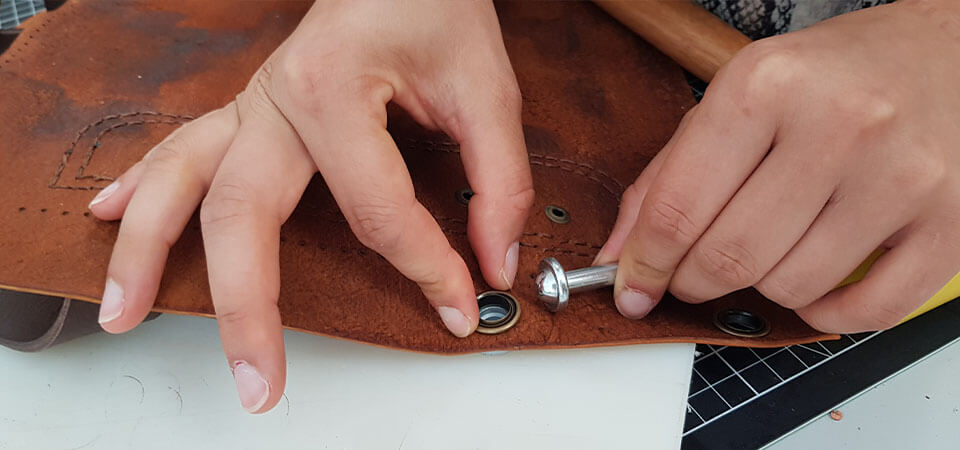
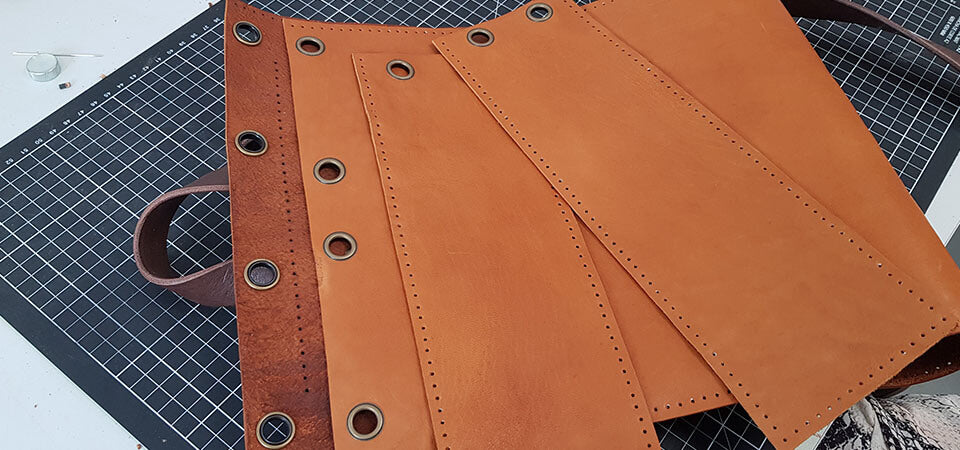
13. Finish working the flap
Take the 33 cm strap. Glue one end of the strap to the center of the top of the flap (see small blue circles on the pattern). 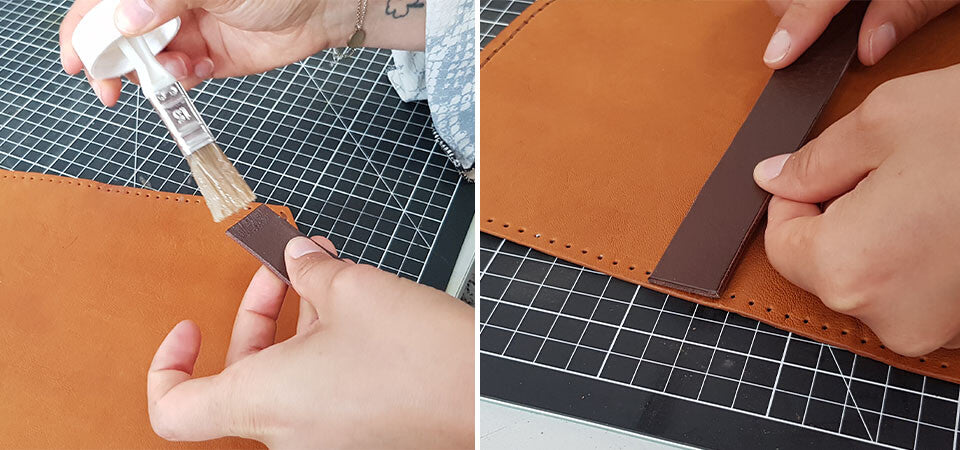
Mark and drill the sewing holes using an awl. Then sew the flap to the top of the bag (piece no. 9). 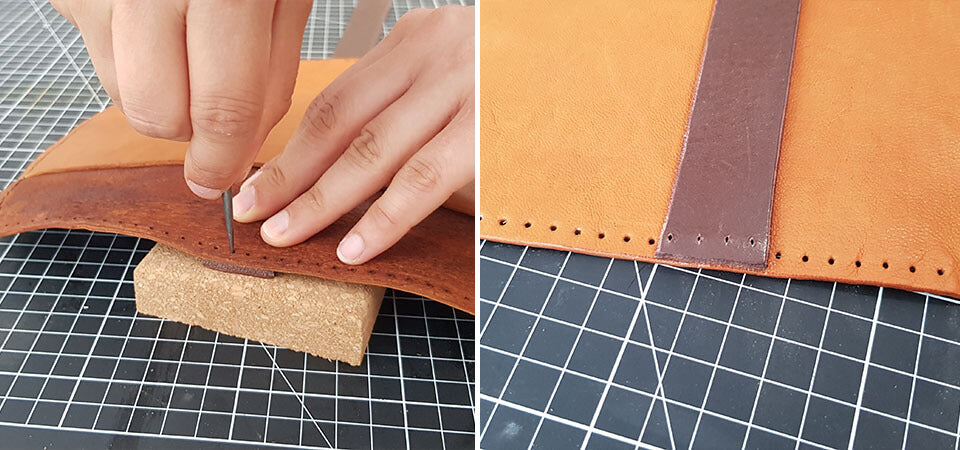

14. Work on closing the bag
Fold the other end of the 33 cm strap on itself (about 5 cm) and place the carabiner.
Make the hole for the rivet and rivet the strap onto the flap. 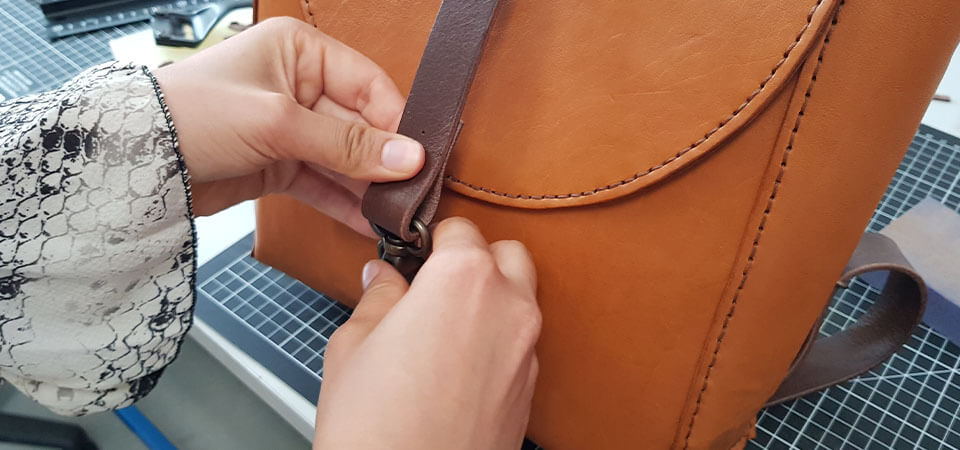
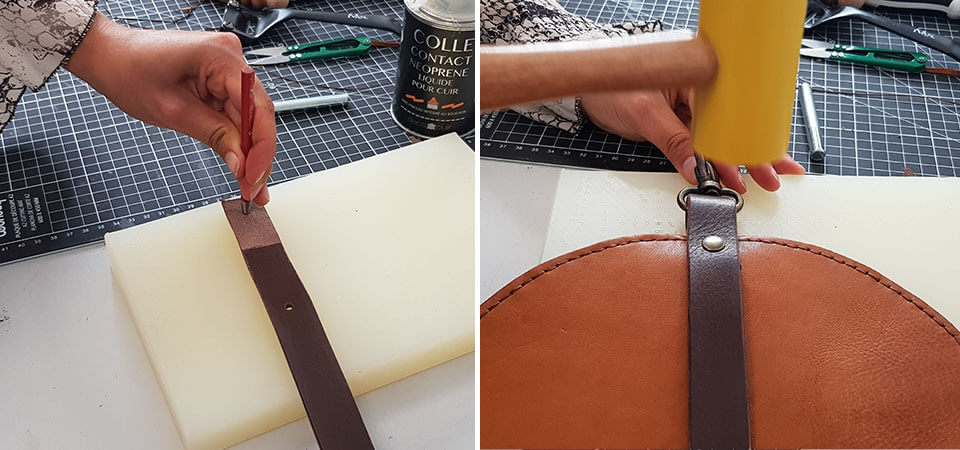
On the back of the bag:
Option: stick the tricolor ribbon at the location of the 1st rivet. Then install the rivets to hold the strap on the bag. 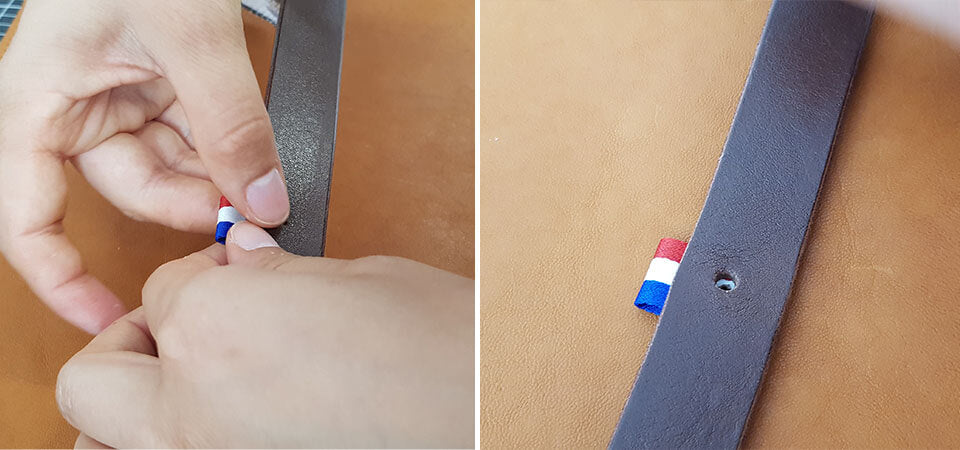
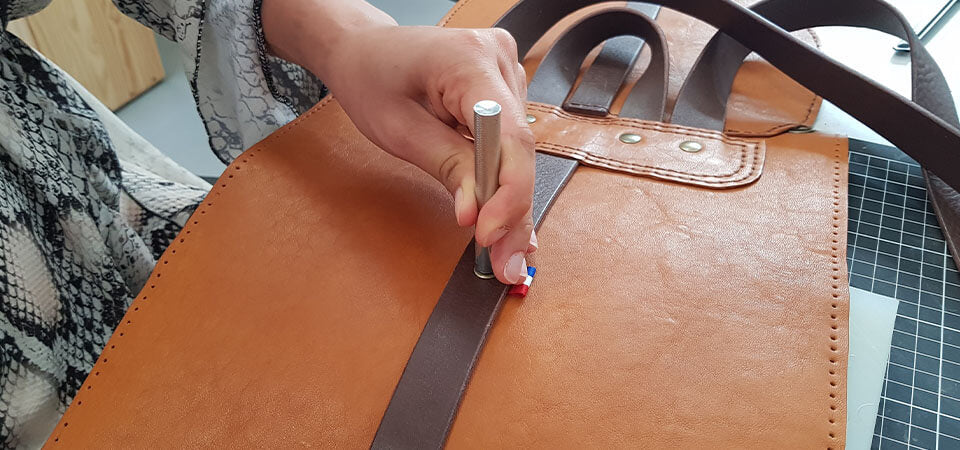
Finally, insert the half-round ring onto the end of the 43 cm strap and fold it back on itself (approximately 2 cm).
Glue and rivet to the back of the bag. 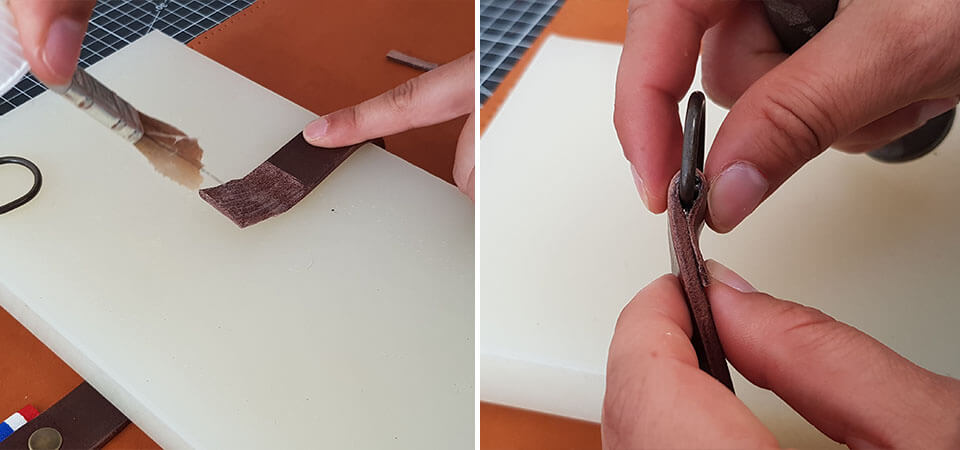
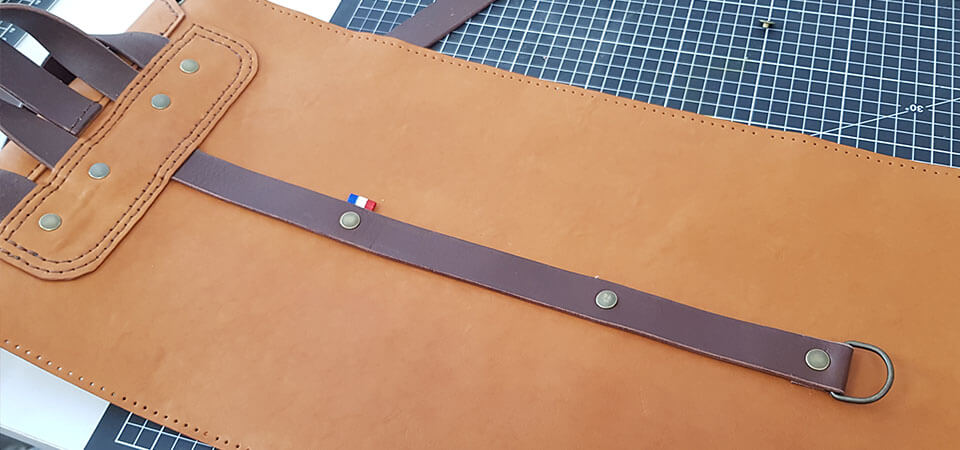
15. Assembling the backpack handles
Sew squares no. 2 and no. 3 on the backpack in the places provided on the pattern (blue circles on piece no. 9). Be careful to position the squares in the right direction: strap towards the inside. 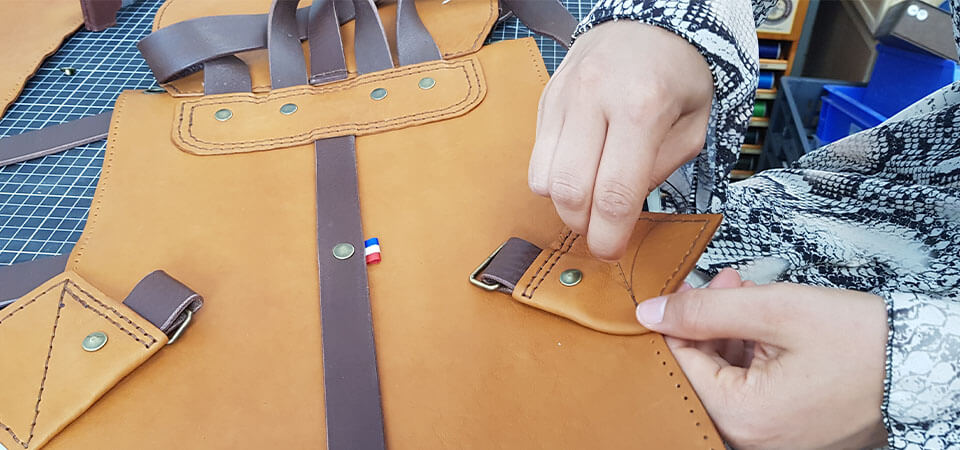
To have an adjustable strap: pass the sliding buckle through one of the 100 cm straps then pass the strap through the rectangular loop. Pass the end of the strap through the sliding buckle. Then, rivet the two thicknesses of the strap together (be careful to rivet the correct thicknesses).
Do the same thing with the second 100 cm strip. 

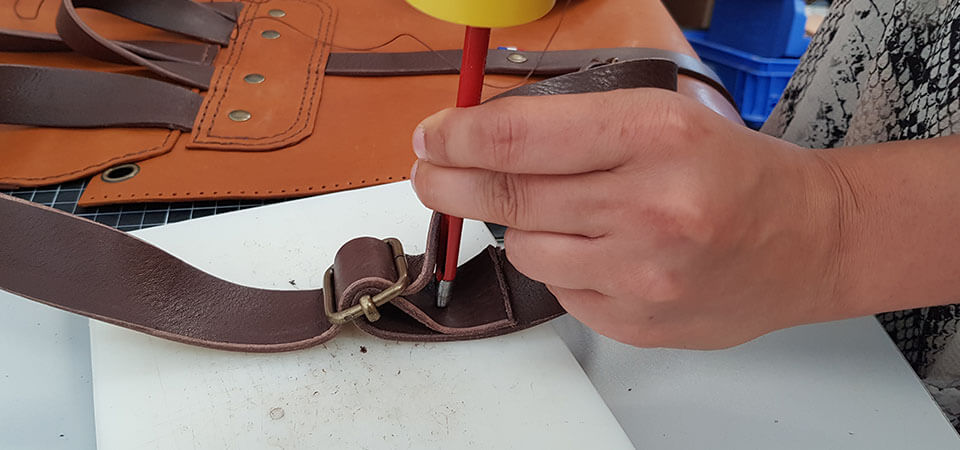
16. Sew the bag
Sew right sides together. The wrong sides of pieces no. 7 and 8 must be sewn to the right side of piece no. 9.
Please note, for the bottom of the bag, we sewed wrong sides together to give the bag more hold and a more rectangular shape at the bottom (see photo 3).
Pass each needle through each hole and tighten the stitch tightly. 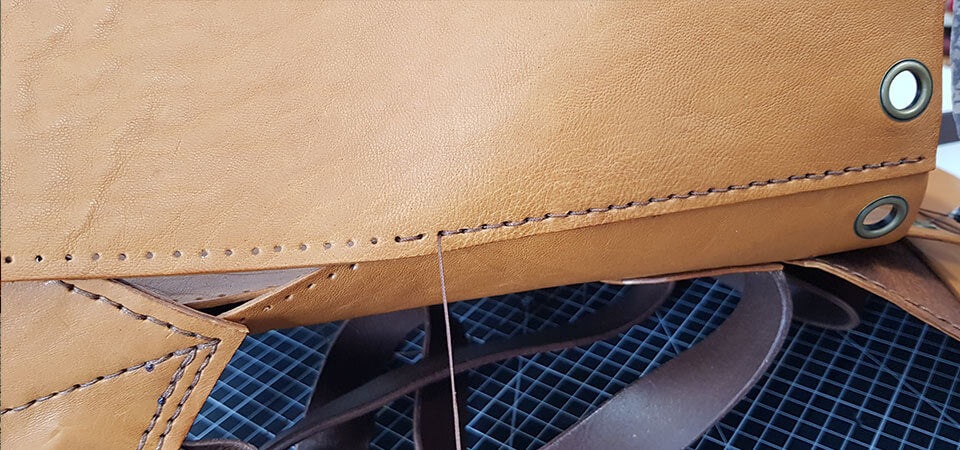
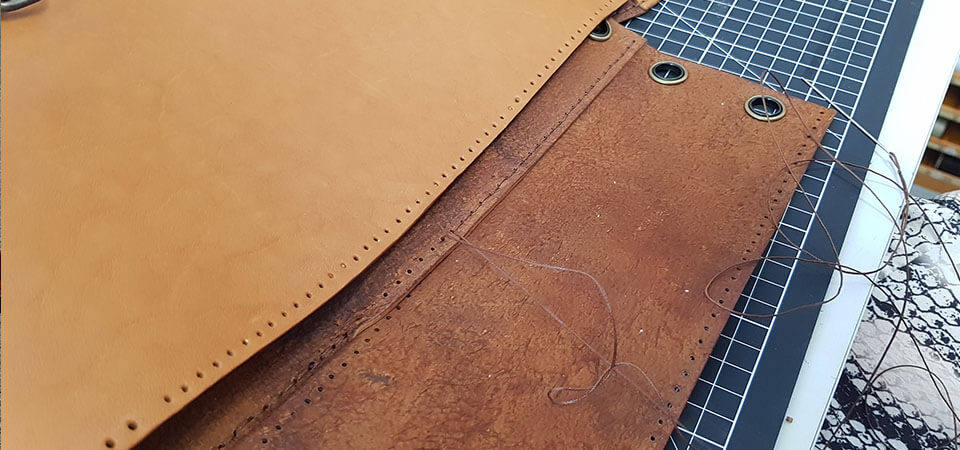
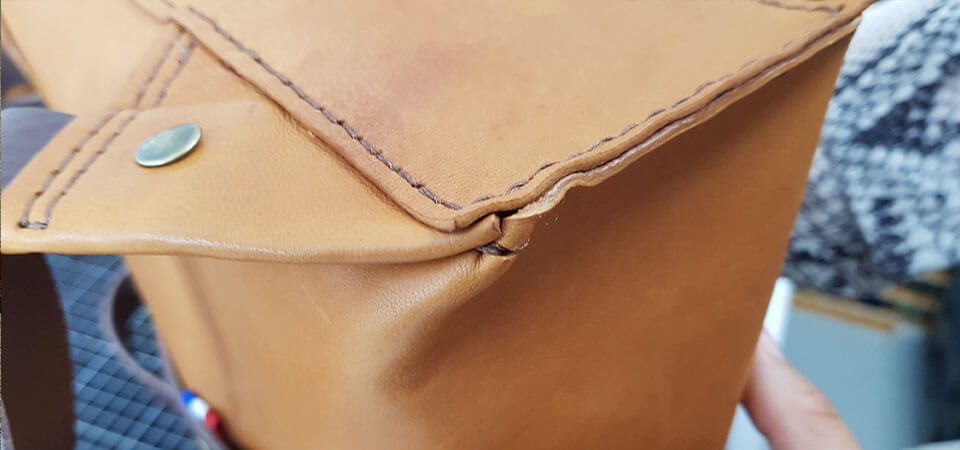
17. Pass the lace to close the bag
Sew part no. 4 of the backpack to form a lace stopper. 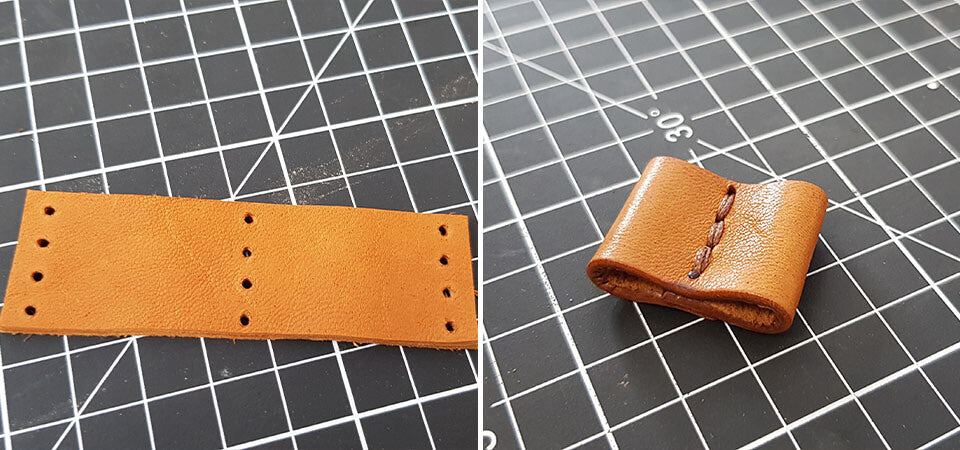
Then pass the lace through the eyelets and through the lace stopper. Finally, tie knots at each end of the lace.
The purse effect gives a more feminine style to the bag, we recommend not using eyelets if you want to have a more masculine style. 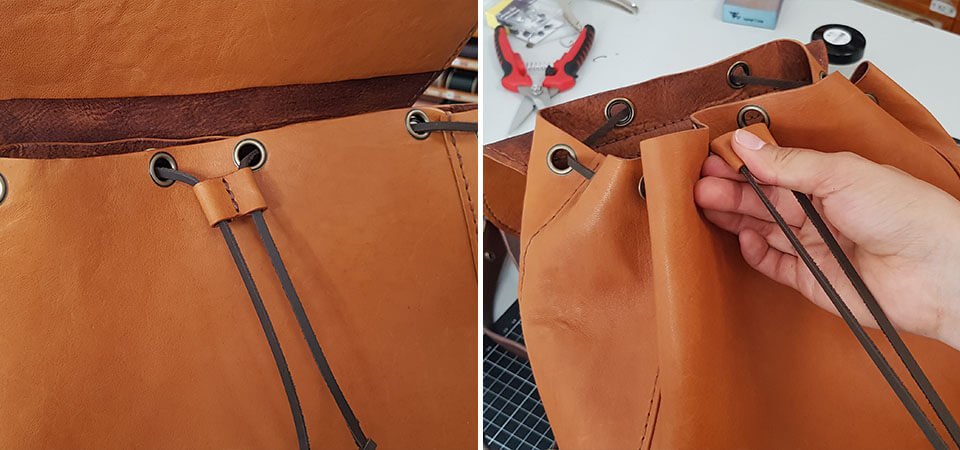
18. Waterproof the backpack
Waterproof the leather backpack with a water-based spray. 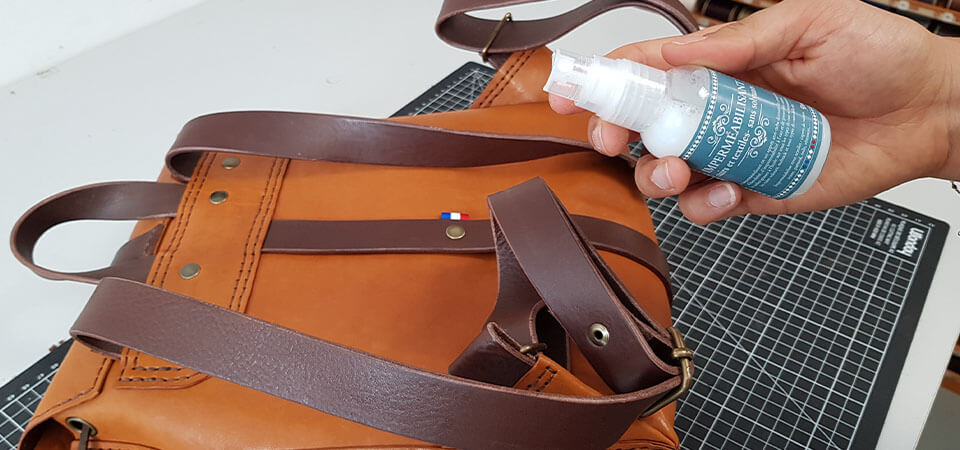
Your home and women's leather backpack is finished! 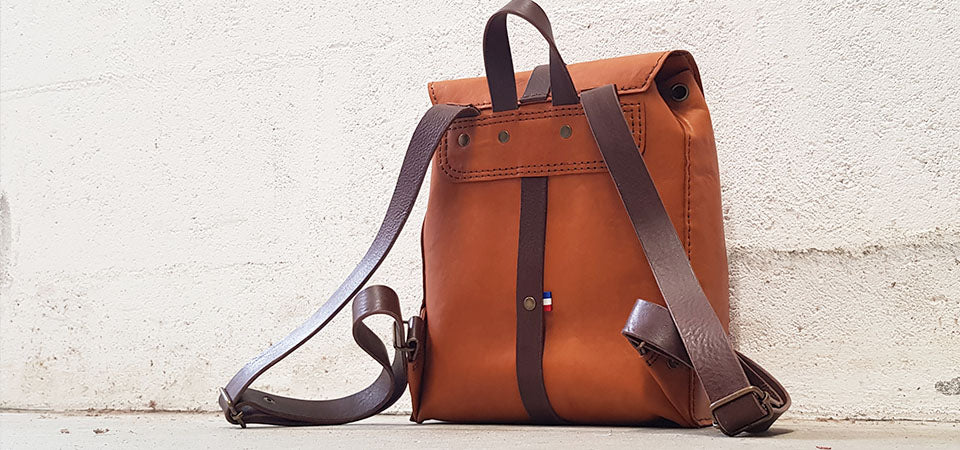
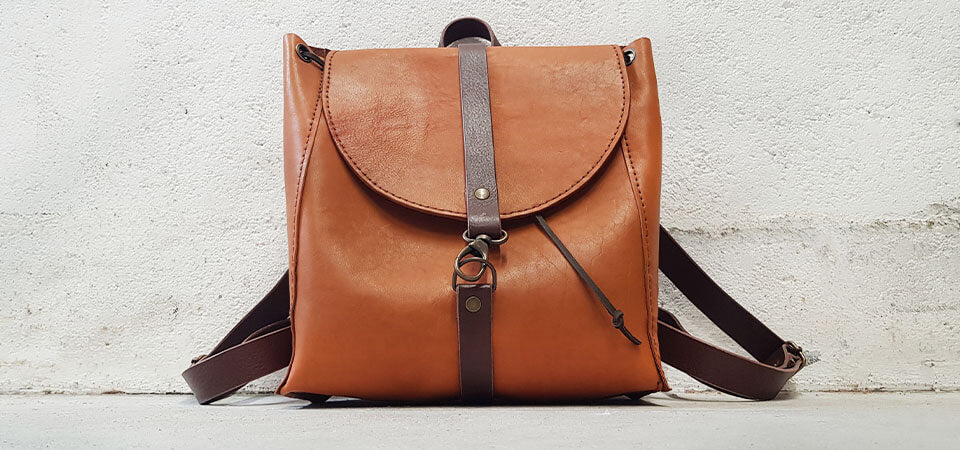

OTHER BACKPACK MODEL
@Marion Créations offers you another version of the backpack.



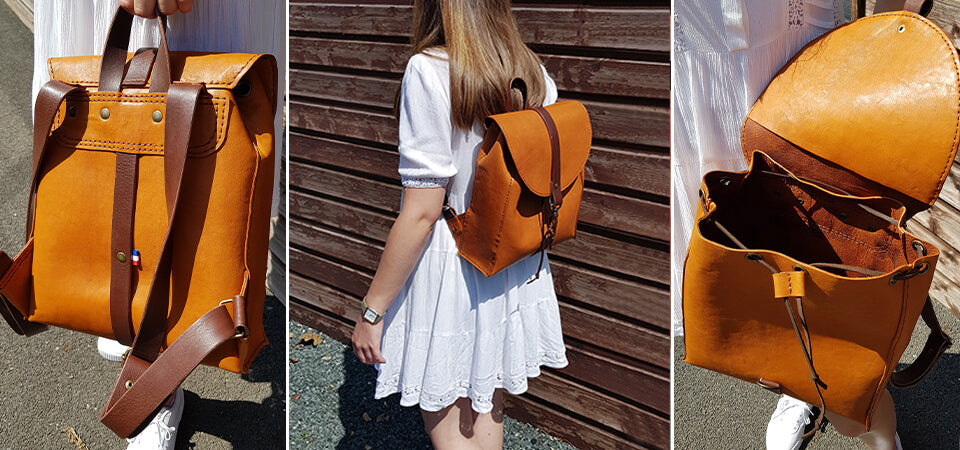
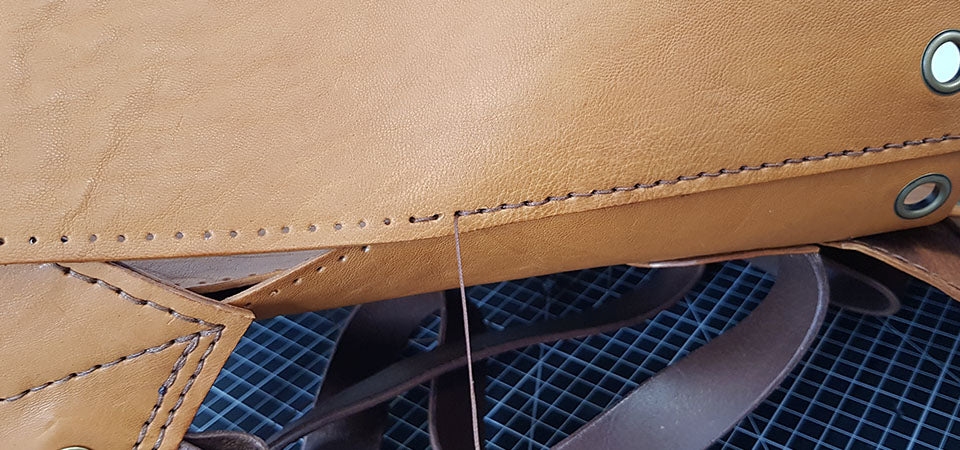
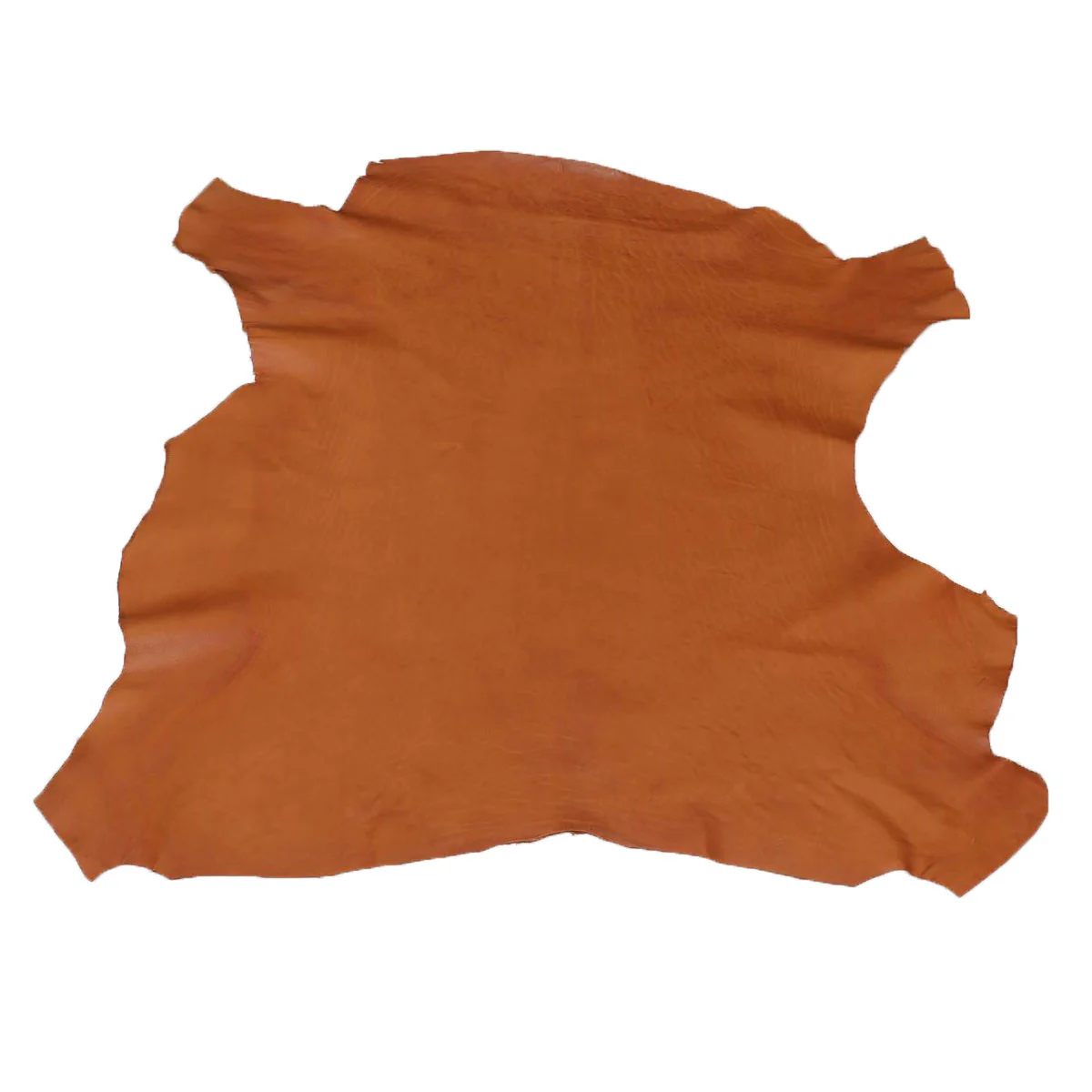
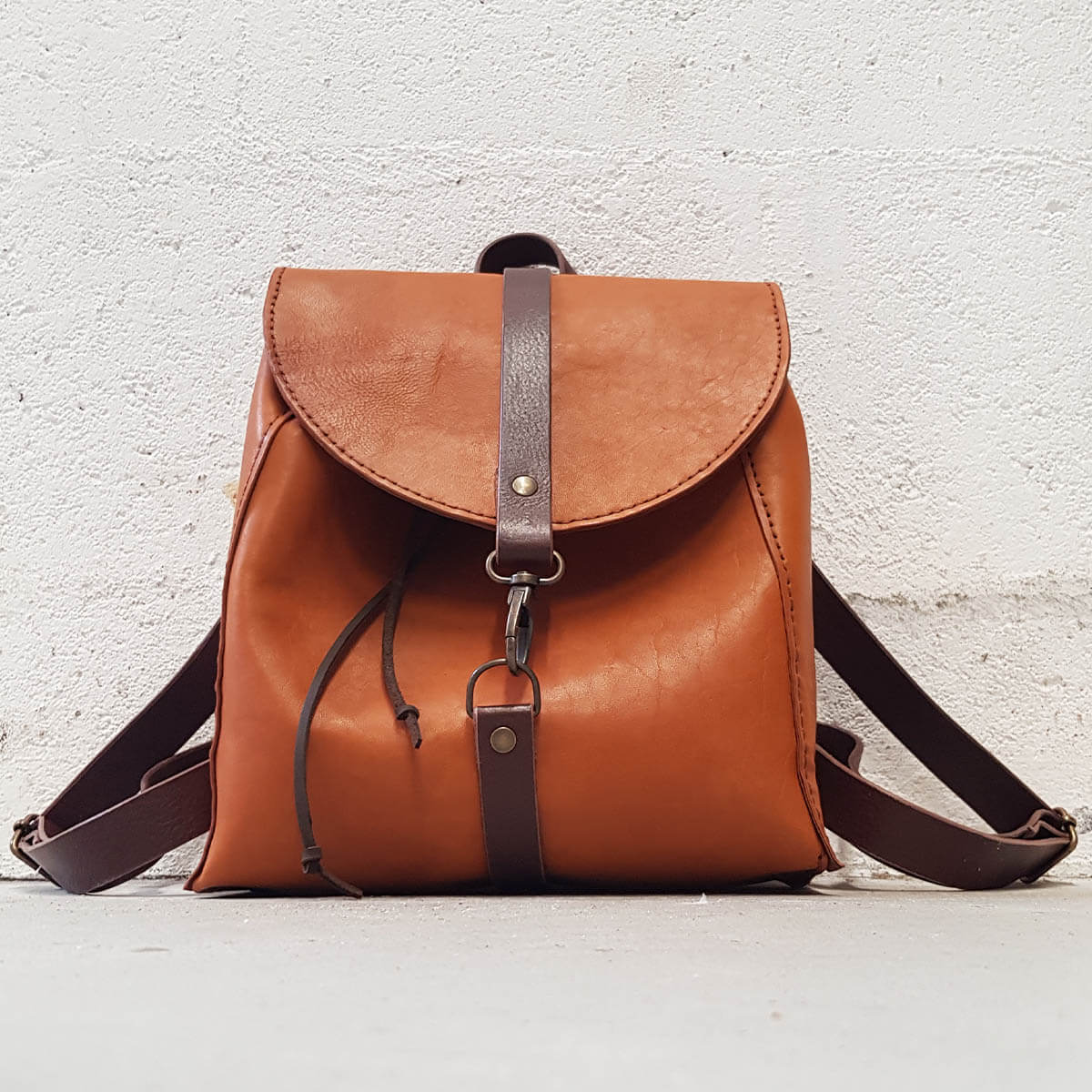




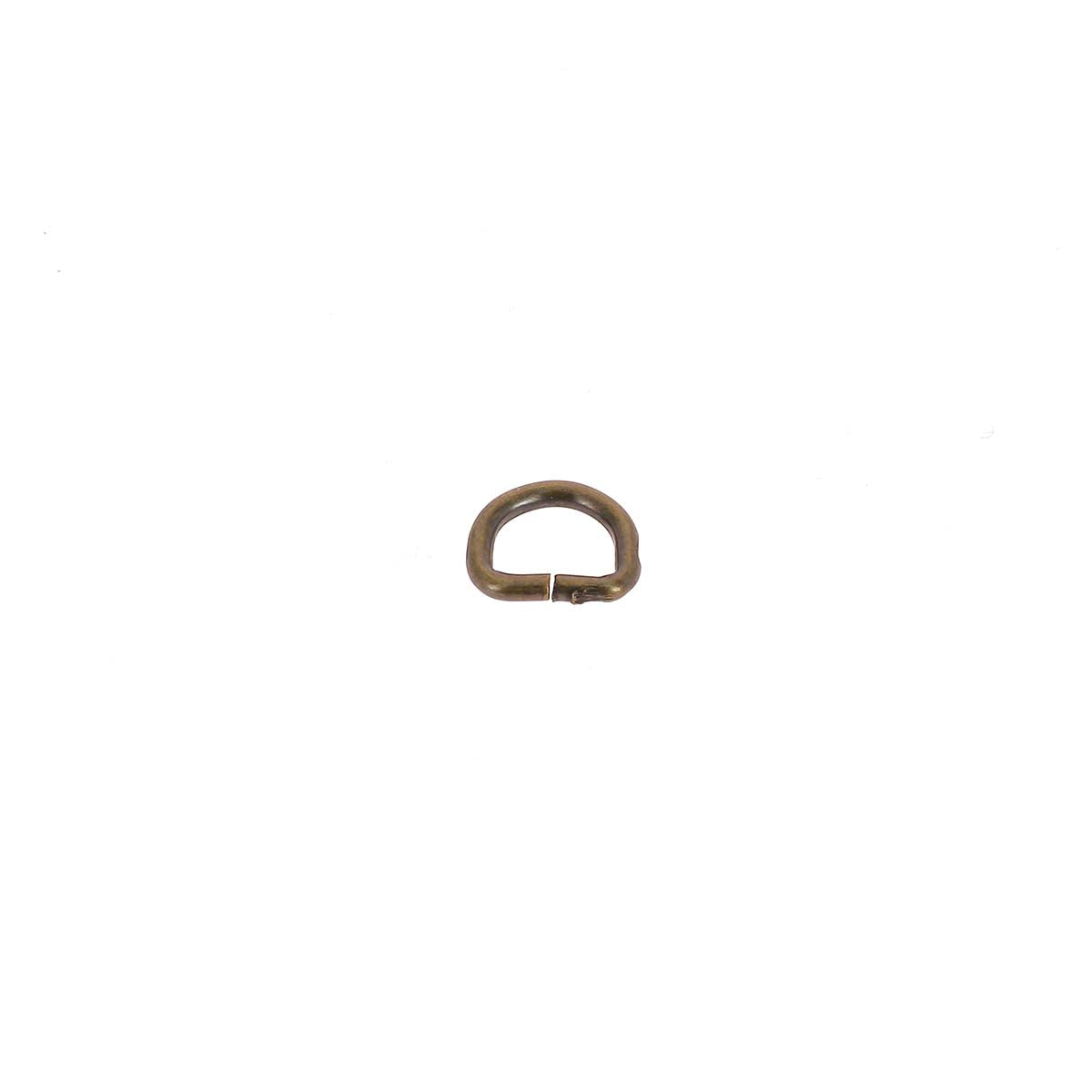

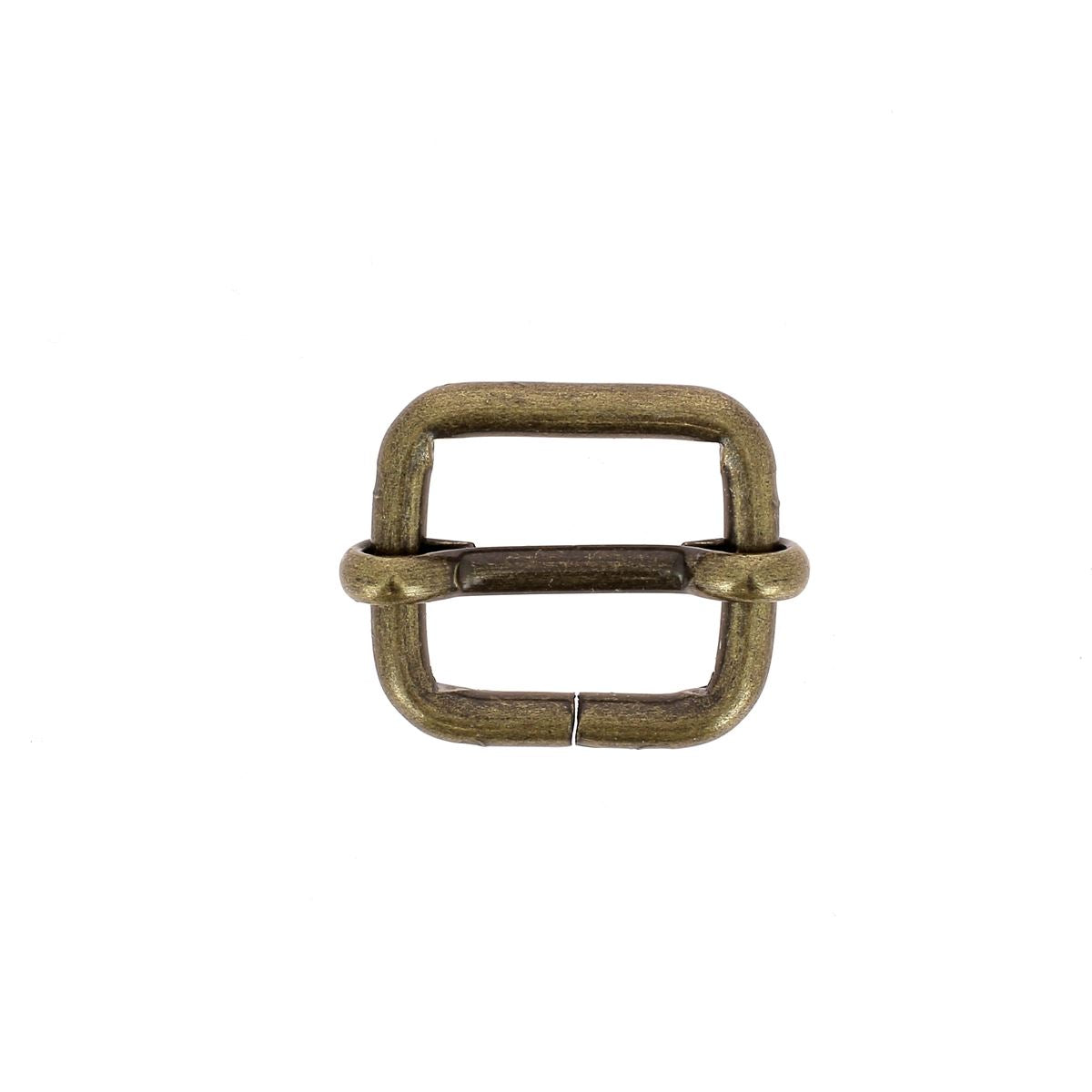



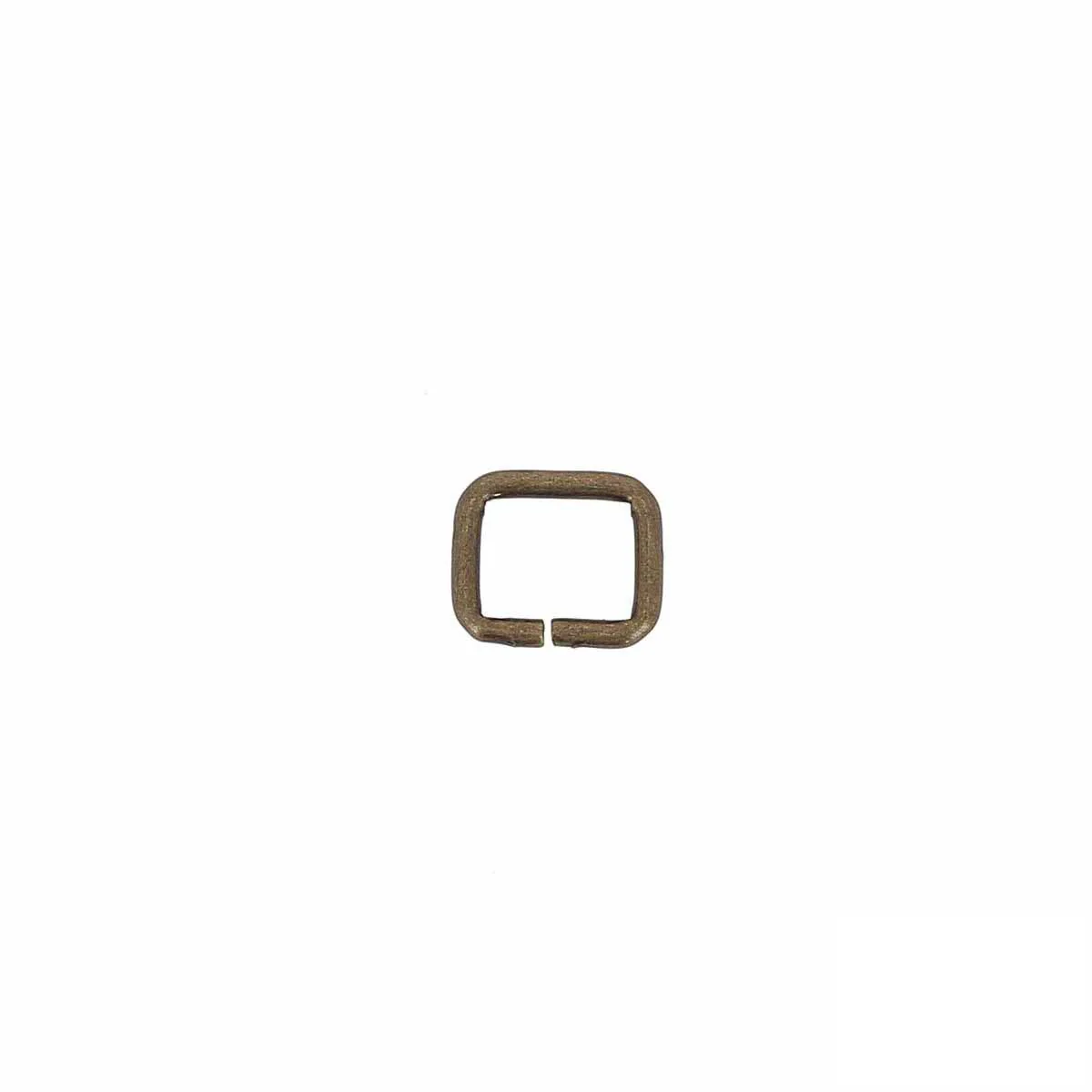





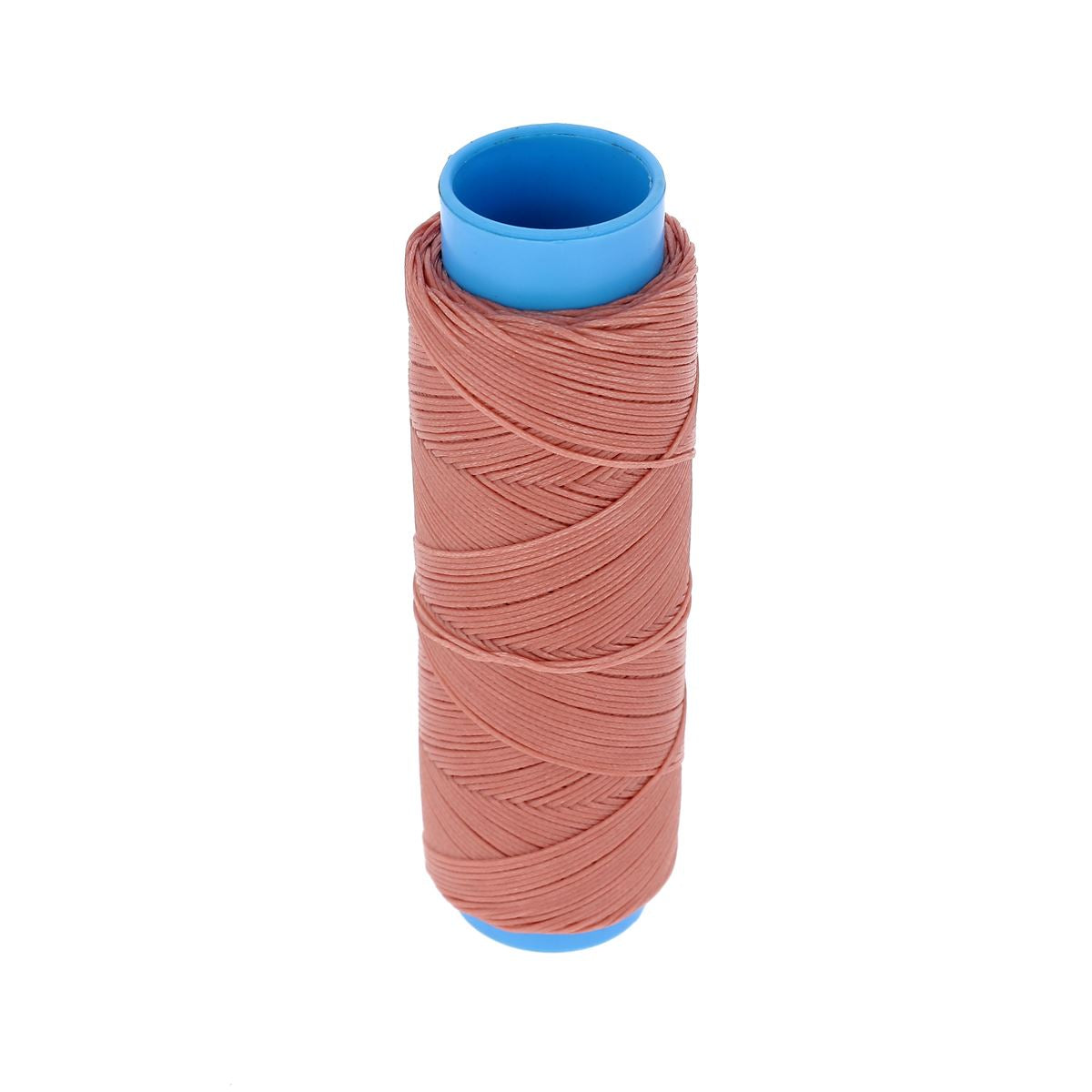

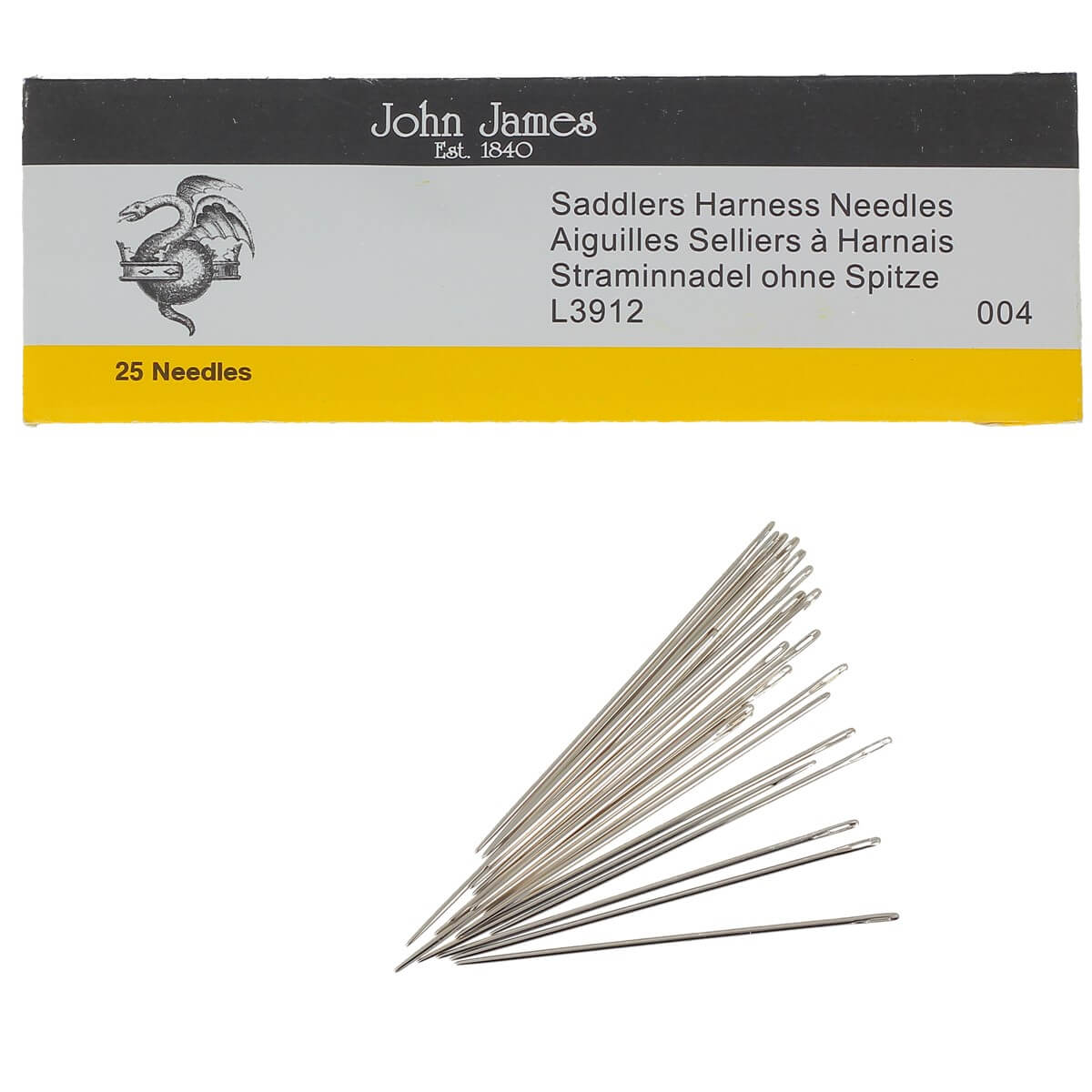
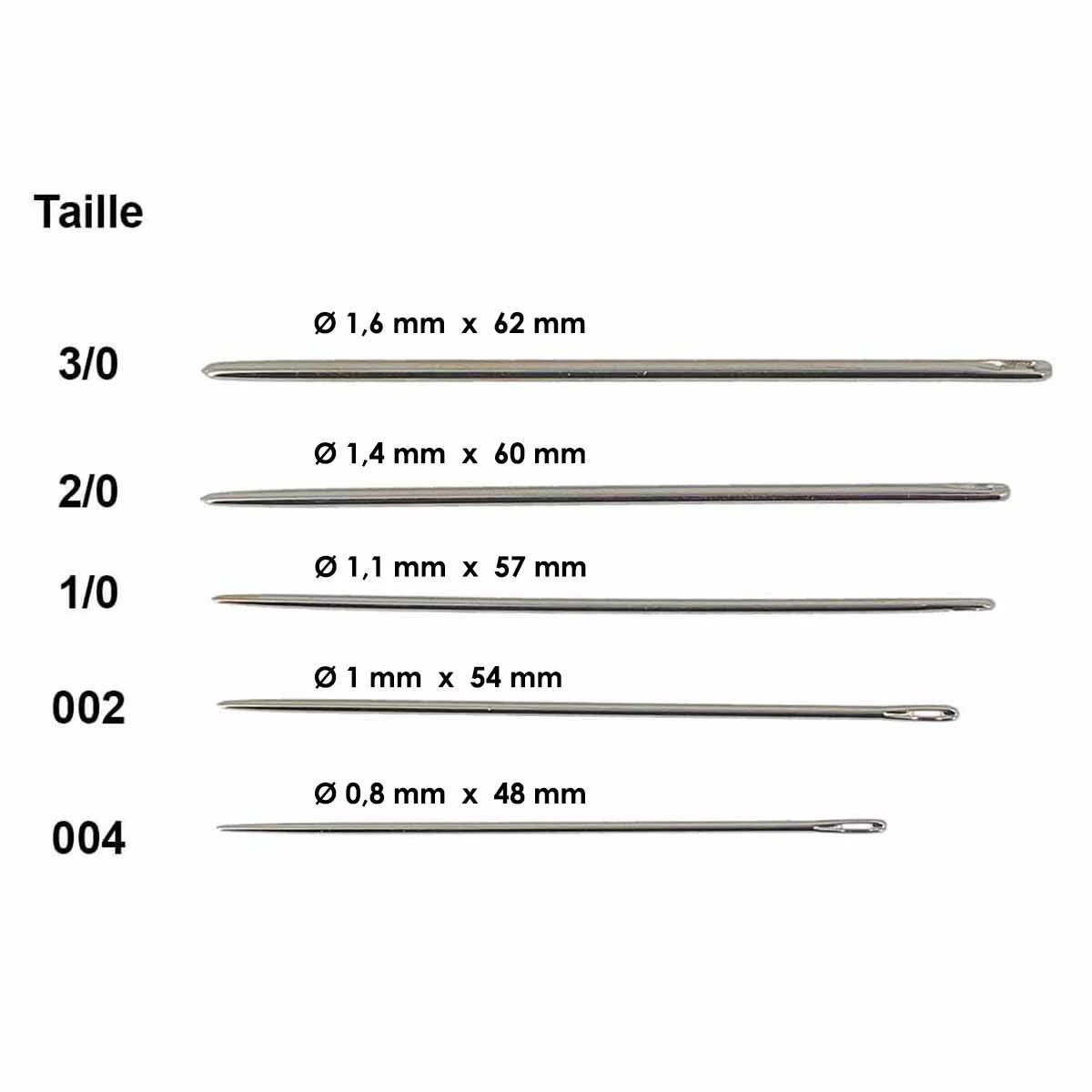








1 comment
marcel theodore
C’est très bon, merci